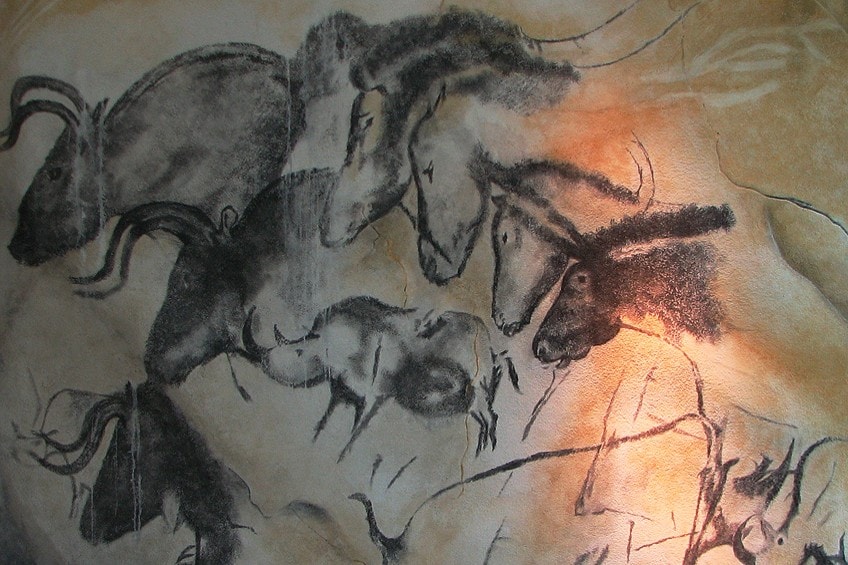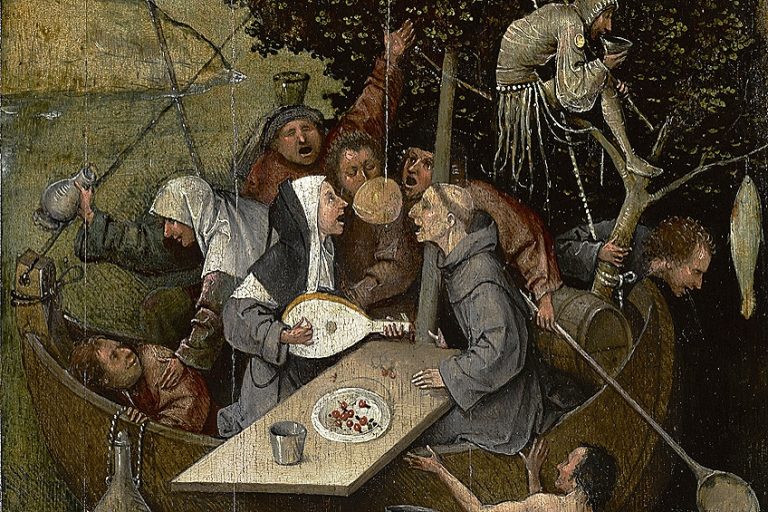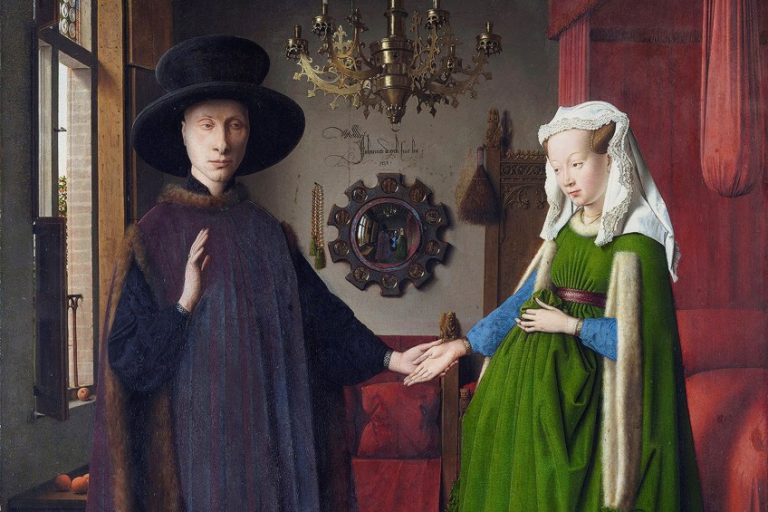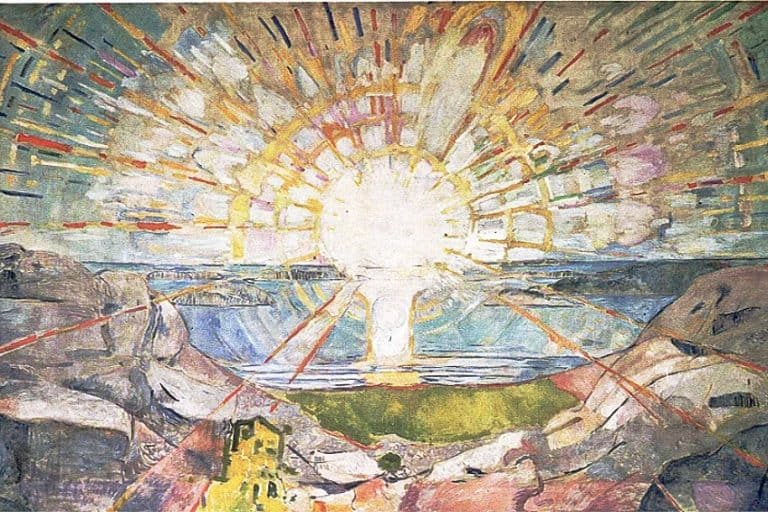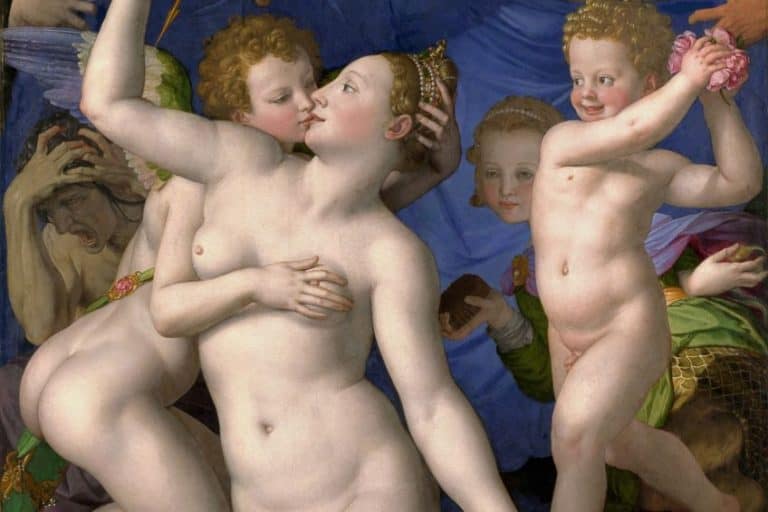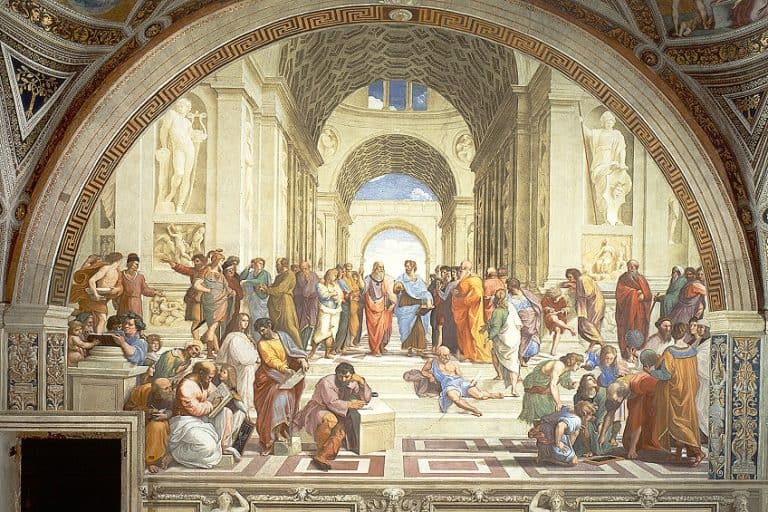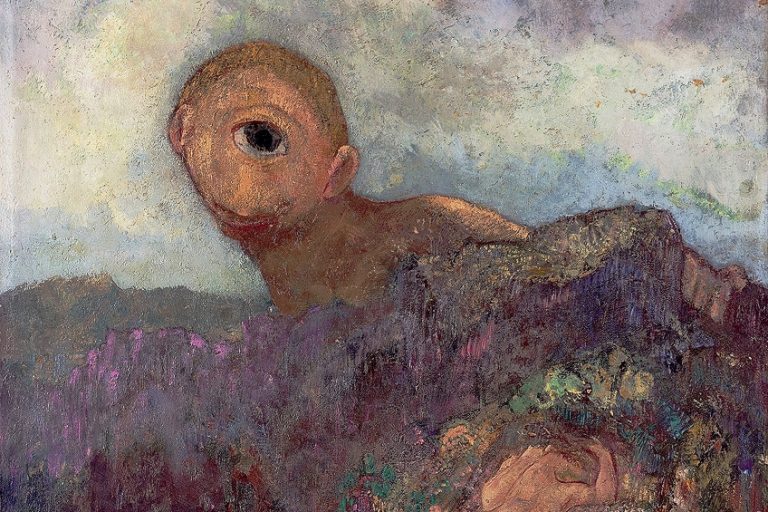Chauvet Cave Paintings – A Look at the Famous Chauvet Cave Art
The Chauvet cave in France features among the planet’s most well-preserved representational cave paintings, such s the Lion panel, as well as additional Upper Paleolithic artifacts. Created around 36,000 years ago, the Chauvet cave paintings feature animals that feel alive even today, giving us a small glimpse of life in the time before recorded human history. Chauvet cave art is full of depictions of animals such as lions, reindeer, and horses.
The Chauvet Cave Paintings
The date was the 8th of December, 1994. Éliette Brunel Deschamps, Jean-Marie Chauvet, and Christian Hillaire, three French cavers, had passed the day examining the Pont d’Arc caverns in the Ardèche area. They stumbled upon a mound of fallen rocks and observed a quiet sound of air from underneath it. They discovered an entrance and descended into a big natural hall with a lofty ceiling that looked to split off into additional chambers after pushing aside the stones. On the wall of one compartment, their spotlights highlighted multiple hand markings and a red-colored artwork of a mammoth.
They realized immediately that they had made a significant historical discovery. The party returned back to the caves at a later stage.
Michel Chabaud, another participant of this expedition, and two others ventured farther into the caves and uncovered the Lion panel, also known as the End Chamber. Chauvet’s report of the findings is rather thorough. They uncovered fossilized bones, prints, and marks from a range of species, many of which are now gone, in conjunction with the paintings and other anthropological traces of ancient human existence.
Features of Chauvet Cave Art
The Ardèche gorges are home to several caves, many of which are geologically or archaeologically significant. The cave appears to have been utilized by people throughout two independent periods, according to radiocarbon dating: the Aurignacian and the Gravettian. The majority of the artwork originates from the older Aurignacian epoch, which occurred roughly 30,000 years ago.
The latter Gravettian occupancy, which took place some 25,000 years ago, left behind a child’s footprints, the charred remnants of old hearths, and carbon smoke traces from flames used to light the caverns.
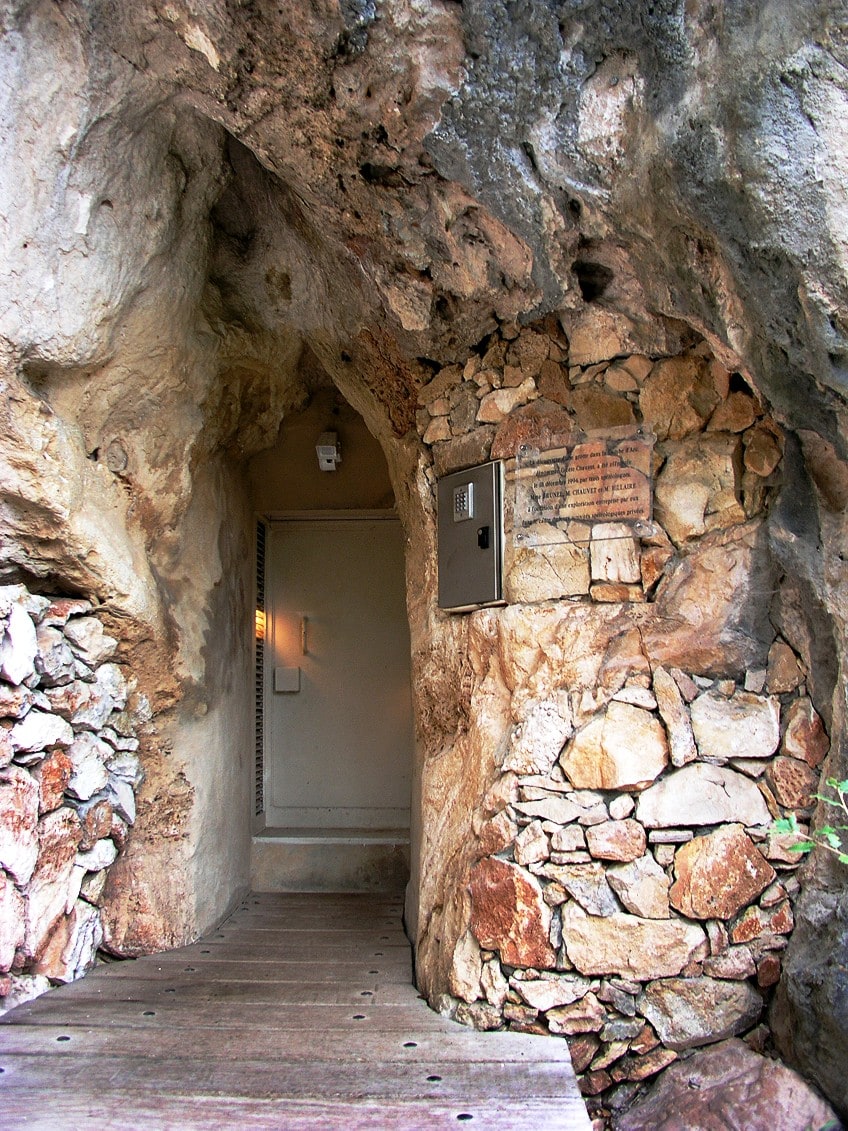
The footprints might be the world’s oldest prints that can be precisely dated. Evidence reveals that after the child’s trip to the cave, the cave remained unaltered until it was found in 1994 owing to a landslide that hid its ancient opening. The cave’s soft floor has bear prints as well as big, circular dents thought to be “nests” where the bears rested. There are several fossilized bones, including bear heads and an ibex’s horned head.
Paw impressions dated to approximately 26,000 BCE have been proposed to be those of a dog, although they have been disputed as resembling those of a wolf.
The Various Chauvet Cave Paintings
Numerous animal artworks, portraying at least 13 distinct species, have been identified, including those that are seldom or never seen in other ice-period works of art. Rather than representing simply the usual animals that abound in Paleolithic cave art, such as aurochs, horses, and mammoths, the Chauvet Cave in France exhibits a variety of predatory species, including leopards, bears, lions, and hyenas.
There are no images of entire human forms, as is characteristic of most cave paintings, however, there is one fragmentary “Venus” image made of what looks to be a vulva linked to an unfinished set of legs.
A bison head is visible above and in touch with Venus, prompting some to call the hybrid picture a Minotaur. A couple of panels have hand prints and red ochre-colored stencils created by spraying pigment over hands placed against the cavern surface. All through the cave, there are geometric markings— dots and lines. There are also two unidentified drawings with a butterfly or bird-like appearance to them. This confluence of topics has prompted some prehistoric-era students to assume that these murals have a ceremonial, mystical, or magical element.

One image, subsequently superimposed with a deer design, is evocative of a volcano pouring lava, akin to the volcanoes that were active in that period. If validated, this would be the first sketch of a volcanic explosion. The people who created these murals employed methods not commonly seen in other cave paintings.
Many of the works seem to have been created only after the surfaces had been scraped clean of dirt and rock fragments, revealing a smoother and substantially cleaner space for the painters to paint on.
Likewise, by perforating or etching around the edges of some figures, a three-dimensional aspect and a sense of motion are obtained. The work is particularly notable for portraying “scenes,” such as animals engaging with one other; for instance, a couple of rhinoceroses are depicted head-butting in an implied fight for dominance or breeding rights.
Interesting Facts About the Chauvet Cave in France
According to the radiocarbon dating of the pigment sample taken from the Chauvet Cave paintings, as well as torch markings, the cave has some of the earliest recorded cave art. Since 1994, the caves have been closed to the public. Entrance is strictly restricted due to the experiences of painted caverns like Lascaux learned in the 19th and 20th centuries, when huge numbers of tourists caused mold to develop on the surfaces, damaging the art in sections. Let us now take a look at some interesting facts about the Chauvet Cave art.
A River Originally Formed the Chauvet Cave in France
Chauvet Cave, like many other caves in the Ardèche, was formed by underground rivers pouring through the area’s rocky outcrops. Chauvet Cave is roughly 1,300 feet in length, with 14 rooms splitting off the main hall, the Chamber of the Bear Hollows, which the explorers had found first. Flooding is supposed to have swept away any painting in this chamber, which is nearest to the entryway.
The most ornate areas are located the furthest away from the entry and include the Red Panels Gallery, Hillaire Chamber, Skull Chamber, and Lion panel chamber.
The Chauvet Cave Paintings Were Created by the Aurignacian Culture
Aurignacians, the earliest biologically modern beings in Europe, lived roughly 40,000 years ago in the Upper Paleolithic. The Aurignacian civilization is distinguished by the creation of a flaking stone tool that was used for making antler and bone tools, engraving, jewelry, and the earliest recorded musical instruments.
Aurignacian human and animal figures, in conjunction with the Chauvet Cave art, have been discovered in various locations in Europe.

Archaeologists uncovered the earliest known Venus sculpture, from about 35,000 years ago, as well as some of the world’s oldest flutes crafted from bone from the same period, at the Hohle Fels cave in southern Germany.
A cave in Borneo in Southeast Asia has the earliest known figurative artwork, which was made at least 40,000 years ago.
The Chauvet Caves in France Were Visited by Humans in Many Periods
Radiocarbon dating of biological elements in Chauvet Cave indicates that the cave was utilized at two separate times. The bulk of the Chauvet Cave paintings was created around 36,500 years ago. The humans brought in wood and burnt it to produce illumination and charcoal for sketching. The Aurignacians then deserted the caves for an unknown cause for roughly 6,000 years and it was occupied by cave bears.
In the Gravettian period, around 30,000 years ago, mankind left behind footsteps, burn markings from their torches, and coal, but no paintings.
Chauvet Cave Art Features 14 Different Species of Animals
Mammoths, Lions, and woolly rhinoceroses are the most prevalent species in the Chauvet Cave art; all of these animals lived side by side with the Aurignacians but are now long gone. Along with bears, the four species account for 70 percent of the species shown in the artwork. Horses, bison, reindeer, ibex, aurochs, red deer, panthers, musk ox, and an owl are among the others.
The artworks are renowned for representing realistic scenarios that expose the creatures’ true character, such as two woolly rhinoceroses barging and a group of lions hunting a herd of bison.
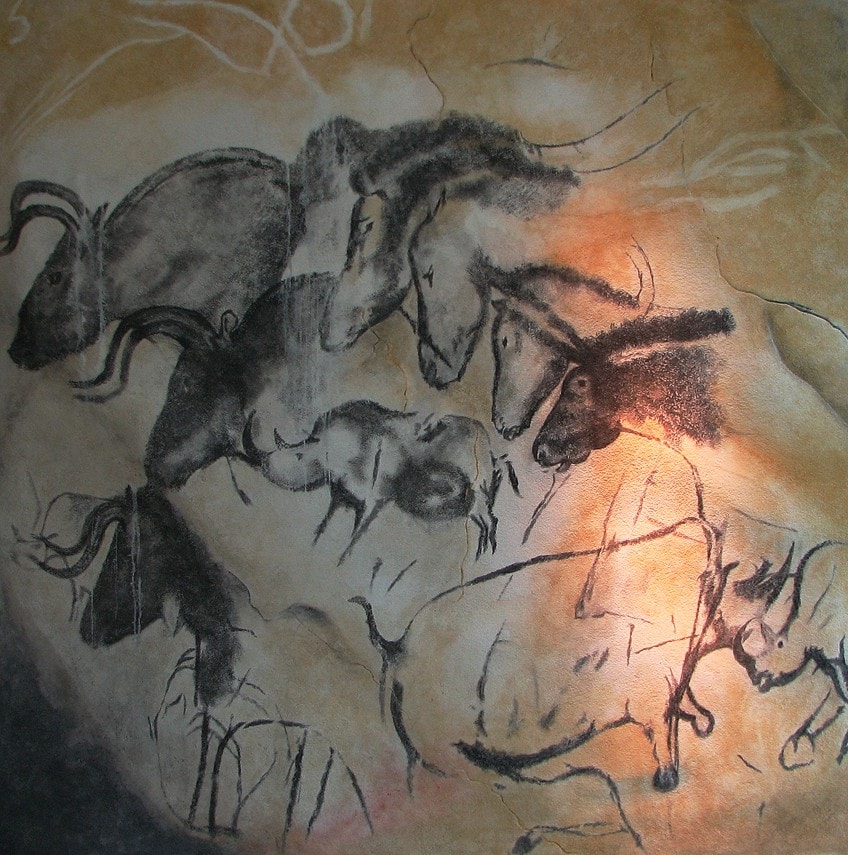
Not Only Animals Feature in the Chauvet Cave Art
Numerous walls and arching rocks in Chauvet Cave’s inner chambers are covered with red dots produced by human hands as well as human hand stencils. Five images of a female’s pelvic area are scraped on the cave’s furthest passages, and one depiction of a woman’s lower torso, comparable in appearance to Paleolithic Venus statues, is etched on a stalactite-like rock.
Anthropologists don’t yet know what they’re supposed to represent.
The Prints of a Child and Possibly Their Pet Canine Were Discovered
As previously stated, a single trace of footprints roughly 230 feet long was discovered in the cave’s soft clay floor. Researchers examined the feet of more modern humans that were thought to be roughly equal to those of the Early Humans in European history and concluded that the trace was most likely formed by a young boy.
Researchers were able to age the prints using the markings left by a blazing torch on the gallery’s ceiling. The boy wiped his light on the ceiling above his route on a routine basis.

These charcoal markings, which date back 26,000 years, appear to have been purposefully put in the opposite direction of the route as if to indicate the path back. The footsteps of the young boy are located close to those of a huge canine, maybe a wolf. Researchers took a closer look and found that the middle digits were smaller than a wolf’s, a characteristic more seen in domestic dogs.
However, when they made the discovery in the 1990s, the earliest confirmed fossil record of a domestic canine went back just 14,000 years before today.
Yet, a study in 2017 that expanded on prior studies matched the genomes of multiple Neolithic canines to those of over 5,500 carnivores, including current dogs and wolves. The researchers determined that wolves and dogs parted biologically around 40,000 years ago and that western and eastern dogs split again around 20 000 years ago.
Many of the Animals Depicted Used the Caves for Shelter
Cave bears, which were larger than modern bears, passed winters in Chauvet Cave for centuries before people started drawing in it. They scratched the walls with their claws and left scores of trails and imprints on the floor. Researchers discovered more than 300 resting areas worn into the cavern floor by bears, as well as hundreds of bear paw prints produced after humans ceased exploring the cave.
There discovered around 2,400 bear remains and 165 skulls spread all through the cave’s major halls.
When researchers first looked inside the cave in the mid-1990s, they discovered a skull of a bear meticulously placed on a massive stone in the center of a cavernous room in a fashion that only humans might do. Multiple wolf prints were found on the floor of the Brunel Chamber, right south of the Chamber of the Bear Hollows, indicating that a huge number of predators had trampled the earth.
Bear prints were overlaid above wolf prints, implying that the bears followed the wolves. The cave was home to more than just huge predators, according to the diversity of bones found.
Along with ibex, wolf, and bear bones, prehistorians discovered roe deer, foxes, birds, bats, rodents, and reptiles. They also discovered petrified wolf dung, showing that the wolves likely traveled inside the cave to try to find carcasses.
The Purpose of the Chauvet Cave Paintings Remains Unknown
The function behind the Chauvet Cave paintings remains unknown, however, several aspects of the paintings may provide hints. The principal animals depicted – lion, bear, mammoth, and rhinoceros – were not targeted animals targeted by Aurignacians for sustenance, indicating that the artworks were not intended to assure abundant hunting.
According to a 2016 examination, the Chauvet Cave painters may have been documenting current events.
Researchers suggested that the artwork in the Megaloceros Corridor was a realistic picture of a volcanic explosion that happened some 36,000 years ago in the adjacent Bas-Vivaris area. If this is correct, Chauvet Cave has the oldest known artwork of volcanic eruptions, outliving the former claim holder, a 9,000-year-old fresco in Turkey, by almost 30,000 years.
A Documentary Was Made About the Chauvet Cave in France
Werner Herzog joined explorers in the recesses of the Chauvet caves for his documentary which was released in 2010. Herzog’s grandpa was an explorer and was always fascinated by cave art. “I was in utter and overpowering astonishment,” Herzog remarked. “Although I understood what was ahead of me since I had seen images.”
He continued: “We still don’t understand why they were created in full darkness, and not near to the light-filled cave entryway.”
The Chauvet Cave in France Is Closed to the Public, but a Replica Exists
The breaths of thousands of tourists when the cave was open to the public in 1948 ruined the cave paintings at Lascaux. On the walls, a green film of bacteria, fungus, and algae grew, while crystal formations covered the frescoes. Dismayed officials shut the cave in 1963 and restricted access to specialists. However, an irreversible degradation cycle had started.
Many of the artworks are now covered in fungal infections that cannot be eliminated without causing greater damage.
Humidity has washed away colors, resulting in drab, grayish calcite walls. Therefore, as soon as the Chauvet Cave was found, specialists hastened to conserve the delicate murals by closing it to the public; presently, only researchers are permitted to enter during specific periods. But it doesn’t mean you can’t view a close-up of the paintings in person. In 2015, the Caverne du Pont d’Arc, a scale copy of the Chauvet Cave art, opened near the location of the original cave. artists precisely replicated not just the spectacular artworks, but additionally the original cave’s dampness, temperature, and nasty smell.
The project involved 500 individuals, comprising designers and engineers, builders, and special-effects specialists, who used 3-D computerized mapping, high-resolution scanning, and pictures to replicate the texture and hues of the cavern. The rugged, sloping rock faces speckled with orange minerals and stalactites that hang from the ceiling, as well as the replica skull and teeth covering the mud flooring, seemed stunningly realistic.
The artworks were duplicated using the stark colors of Paleolithic painters, sketched on substrates that replicated the limestone utilized by prehistoric artists.
The precision of replication was greatly enhanced by the cooperation of some of France’s most prominent prehistoric cave specialists. Using 3-D simulations, the team meticulously scanned every inch of the actual Chauvet.
Architects hoisted a structure of forged iron rods from the concrete shell’s ceiling, molded to exact digital coordinates given by the 3-D design. To replicate the limestone within Chauvet, they placed mortar over the metal.
Based on studies made by geomorphologists, modern artists then painted colors with bristles, simulating the neutral colors of the cave walls.
Crystal structures and animal bones were produced with plastic. Around 25 different panels were created using synthetic resin at Montignac and Toulouse studios. They designed the environment to feel as similar to accessing the original caves as possible.
The many and different creatures that adorn the cave’s inner walls – both painted and etched – are of such outstanding artistic merit that they were previously assumed to be nearer in date to the comparably magnificent, but much later paintings in cave systems such as the Lascaux Cave. Jean-Marie Chauvet and two companions were investigating a region on the bank of the Ardèch River, pursuing their passion for cave exploration and study. They were drawn to the prospect of underground caverns by a faint air flow emerging from a hole. While walking through the corridors, they spotted some little remnants of red ochre before being taken aback by the sheer scale of the multitude of murals and carvings. Since that day, the Chauvet Caves in France have become world famous for their amazing works of cave art.
Frequently Asked Questions
Which Animals Can Be Found in the Chauvet Cave Paintings?
The most common species depicted in Chauvet Caves are mammoths, lions, and woolly rhinoceroses; all of these creatures coexisted with the Aurignacians at that time but are now extinct. Together with bears, these four species account for 70% of the species represented in the paintings. Among the others are horses, bison, reindeer, ibex, aurochs, red deer, panthers, musk ox, and an owl. The artworks are famous for depicting realistic scenes that reveal the genuine nature of the beasts, such as two woolly rhinoceroses barging and a troop of lions pursuing a herd of bison.
Why Were Chauvet Cave Artworks Created?
The purpose of the Chauvet Cave paintings is unknown, however various elements of the murals may give insights. The main creatures shown were not animals intended for eating by Aurignacians, indicating that the artworks were not designed to guarantee bountiful hunting. A 2016 investigation found that the Chauvet Cave paintings may have chronicled contemporary events. It has been discovered that humans explored the caves for several centuries and that bears and wolves frequently inhabited the caves when humans were not around.
Can I Visit the Chauvet Cave in France?
Unfortunately, no members of the public may access the restricted cave system. This is to protect the valuable yet delicate artworks that lay inside. One might wonder what damage we could do, seeing that the artworks have survived for thousands of years, but the truth is, before the influx of humans to cave systems to see ancient artwork, there would have been a handful of beings in the cave, not thousands of daily visitors. Even just the act of breathing disturbs the natural balance of air and water in the cave system, creating films of mold that begin to decay the wall surfaces. However, in recent years, a man-made replica of the cave system has been created so that people interested in the artworks can experience what it was like. Much time and effort have been taken to create a genuine experience, perfectly capturing the ambiance and environment of the inner cave systems of Chauvet.
Alicia du Plessis is a multidisciplinary writer. She completed her Bachelor of Arts degree, majoring in Art History and Classical Civilization, as well as two Honors, namely, in Art History and Education and Development, at the University of KwaZulu-Natal, South Africa. For her main Honors project in Art History, she explored perceptions of the San Bushmen’s identity and the concept of the “Other”. She has also looked at the use of photography in art and how it has been used to portray people’s lives.
Alicia’s other areas of interest in Art History include the process of writing about Art History and how to analyze paintings. Some of her favorite art movements include Impressionism and German Expressionism. She is yet to complete her Masters in Art History (she would like to do this abroad in Europe) having given it some time to first develop more professional experience with the interest to one day lecture it too.
Alicia has been working for artincontext.com since 2021 as an author and art history expert. She has specialized in painting analysis and is covering most of our painting analysis.
Learn more about Alicia du Plessis and the Art in Context Team.
Cite this Article
Alicia, du Plessis, “Chauvet Cave Paintings – A Look at the Famous Chauvet Cave Art.” Art in Context. August 29, 2022. URL: https://artincontext.org/chauvet-cave-paintings/
du Plessis, A. (2022, 29 August). Chauvet Cave Paintings – A Look at the Famous Chauvet Cave Art. Art in Context. https://artincontext.org/chauvet-cave-paintings/
du Plessis, Alicia. “Chauvet Cave Paintings – A Look at the Famous Chauvet Cave Art.” Art in Context, August 29, 2022. https://artincontext.org/chauvet-cave-paintings/.


